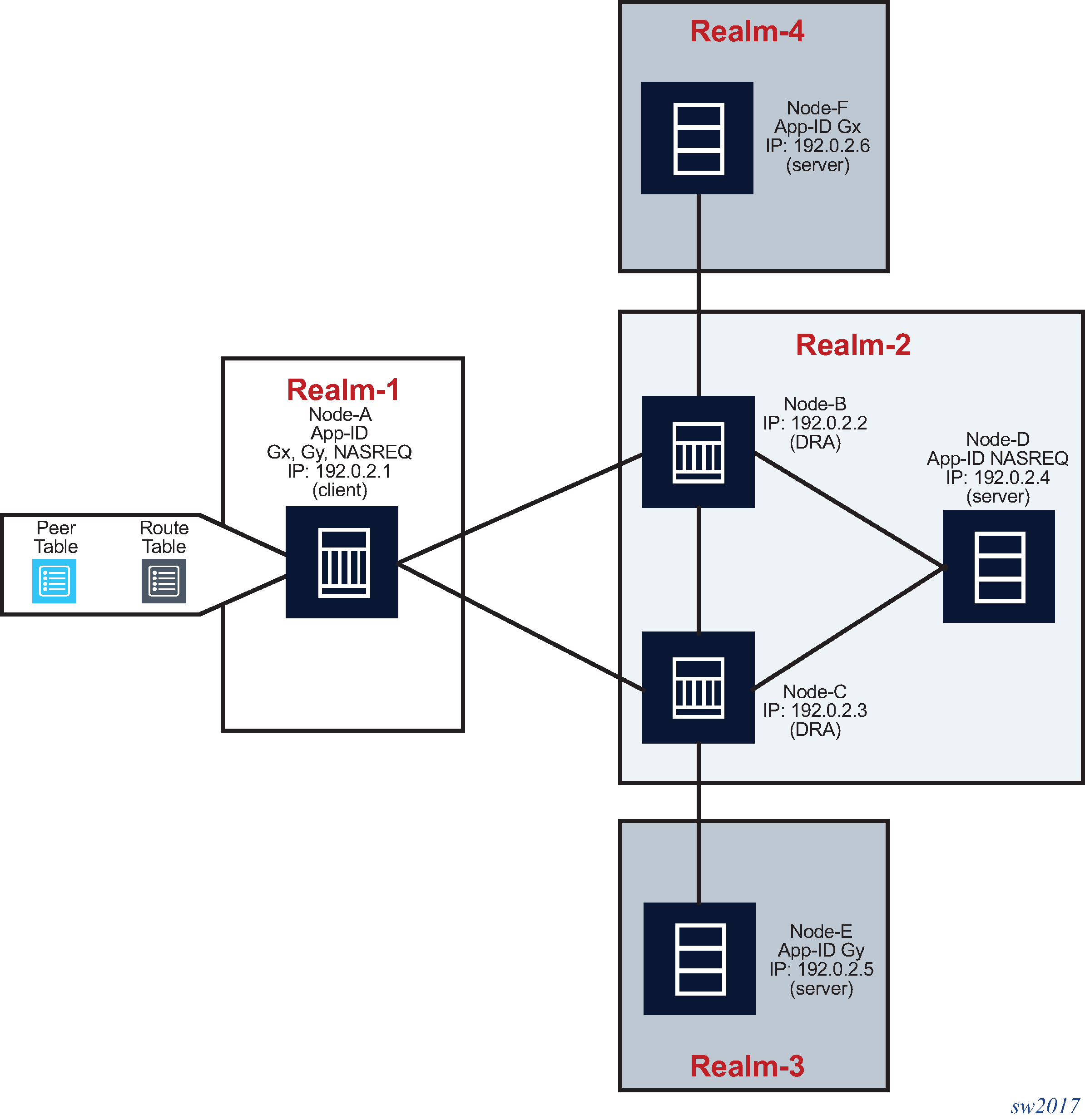In this example, Gx and Gy traffic, destined for the remote realms Realm-3 and Realm-4, is balanced over two DRAs. Gx traffic destined for Realm-4 flows through Node-B, while Gy traffic destined for Realm-3 flows through Node-C, according to the preference of the static routes. If the connection to one of the peers fails, the surviving connection takes over as shown in Figure: Reaching remote realms.

NASREQ traffic, which is destined for the directly-connected Realm-2 flows through Node-B because it has a lower peer index, while the peer preference is the same as on peer Node-C as described in Table: Peer table and Table: Realm routing table . Only when the communication to this peer fails does Node-C be selected as the new peer.
>config>aaa# info
----------------------------------------------
diameter
node "sr" origin-realm "realm-1" create
peer index 1 "node-b" create
address 192.0.2.2
preference 5
route index 1 realm realm-3 application gx
preference 10
route index 2 realm realm-4 application gy
preference 20
no shutdown
exit
peer index 2 "node-c" create
address 192.0.2.3
preference 5
route index 1 realm realm-3 application gx
preference 20
route index 2 realm realm-4 application gy
preference 10
no shutdown
exit
exit
exit
| Host identity | IP address |
|---|---|
Node-B |
192.0.2.2 |
Node-C |
192.0.2.3 |
| Realm name | App ID | Peer | Entry | Preference |
|---|---|---|---|---|
Realm-2 |
0xffffffff |
Node-B |
dynamic (learned) |
5 |
Realm-2 |
0xffffffff |
Node-C |
dynamic (learned) |
5 |
Realm-3 |
Gx |
Node-B |
static |
10 |
Realm-3 |
Gx |
Node-C |
static |
20 |
Realm-4 |
Gy |
Node-C |
static |
20 |
Realm-4 |
Gy |
Node-B |
static |
10 |
The NASREQ routing in this case can be configured in several ways:
with the same preference for both peers (as in the example above), where the peer with the lowest index prevails
with different peer preferences as shown in the example below
*A:right-b4>config>aaa# info ---------------------------------------------- diameter node "sr" origin-realm "realm-1" create peer index 1 "node-b" create address 192.0.2.2 preference 10 no shutdown exit peer index 2 "node-c" create address 192.0.2.3 preference 5 no shutdown exit exit exitIn this case, the preferred NASREQ path is through Node-C.
with static routing
*A:right-b4>config>aaa# info ---------------------------------------------- diameter node "sr" origin-realm "realm-1" create peer index 1 "node-b" create address 192.0.2.2 preference 10 no shutdown exit peer index 2 "node-c" create address 192.0.2.3 preference 10 route index <index> realm realm-2 application nasreq preference 5 no shutdown exit exit exitIn this case, the NASREQ path is through Node-C because the preference of the static route is the lowest.